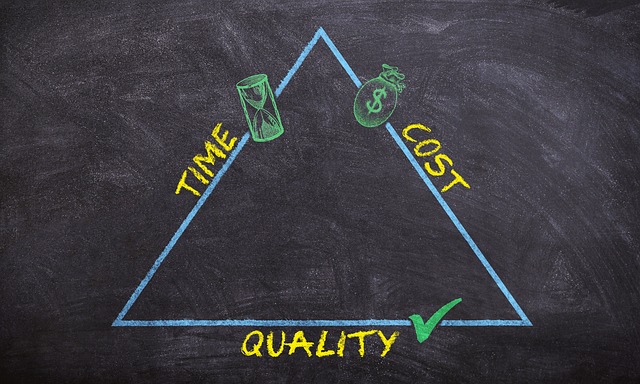Three Tools for Productivity in Freelance Work
The world is filled with productivity killers. Especially if you’re a freelancer. Especially if your primary source of income is online. This humble writer, for example, has been plagued by them all morning. An empty pet food dish is, after all, an emergency, and Facebook notifications must be compulsively checked and cleared.
Productivity in freelance isn’t just about removing distractions, however. Creating a workflow that leads you through the day, minimizes multitasking, and helps you set priorities is one of the best ways to reclaim your time. You can do this by adding new tools and apps to your repertoire, creating automated or streamlined ways of performing routine tasks, and even changing the way you think about your projects.
Streamlining Your Time for the Best Productivity
Focus on completing one task at a time.
A clear set of task priorities can be an elusive thing, but it’s important to keep a clear head and a sense of priority so that you can work efficiently through stressful days. The choices can be agonizing when something urgent comes up in the middle of a time-intensive task. An email from a panicked client, a problem with a project on a tight deadline, or a simple overabundance of things to do can wreck an entire day. But if you take it one task at a time, in order of priority, you’ll spend less time worrying and more time knocking work off the list.
Don’t be tempted to multitask.
Research shows that focusing on task priority, cutting the fat in terms of busywork, and avoiding multitasking all make you a more efficient worker. Multitasking splits your attention and it’s easy to lose sight of your priorities. Multitasking can quickly lead to “mission creep” — where one unexpected task leads to another, over and over again, until you’ve spent an entire day on work you weren’t planning on doing.

Apps and Tools to Keep You On Task
Quickbooks has a great resource that collects tools from across the web and various app stores. It’s comprehensive, and a long read, but well worth the time if you’re looking for some automated little boosts to your time management.
Some of the most useful tools are quite passive, and include time trackers that let you know how long you spend on particular sites (coughfacebookcough) or blocking them completely during set hours. Others set focus timers for you, remind you to take breaks, or even alter the colours on your computer screen for less eye strain.
Simple additions like this, even the occasional reminder to get up and stretch, can have a major impact on your day. This isn’t just about squeezing every ounce of productivity out of your day, it’s also about managing your health and happiness.
Changing the Way Your (and Your Clients) Think About Your Time
Here’s the big change. It’s time to think hard about the way you and your clients view your time.
As a freelancer, you probably know very well that many clients view you as an unlimited well of time and attention. They’re not intentionally disrespecting your time, they just don’t necessarily think about the fact that you might have other clients, need a break, or maybe to eat from time to time.

Managing the expectations of clients is one of the most useful tools in reclaiming lost time. In order to do that, you might need to rethink things yourself. There are a few ways you can change these points of view. Two big ones come down to hours versus project tracking, and office hours.
Hourly Compensation Or Project Compensation?
Freelancers often work by an hourly rate, which can be a mistake. Clients can take this to mean that they’re entitled to as much time as they will pay for. As long as they’re paying, you should be at their beck and call. That’s why switching to an emphasis on projects, not hours can be such a critical change in your freelance lifestyle. A project contract can outline exactly what services, support, and hours a client can reasonably expect. It helps you to enforce a degree of professional separation, forcing them to think of your work as a project, not just the result of a remote wage slave. This will also stabilize your financial planning and invoicing.
And About Those “Office Hours . . .”
Office hours are the next step in reclaiming time lost to emails, phone calls,questions and demands. Establish a set of office hours (even if you work at home — your computer is your office). The crucial thing to note is that your office hours are not “I work from X until X.” Office time should be “I am available to take questions between X and X.” Do you see the difference? Only tell a client that you’re available during time that you specifically set aside for communications. Make it a reasonable window of a few hours, especially if you have international clients, but never, ever, make it your entire workday.
If you get an email or phone call outside of office hours, ignore it until those hours next begin. Have a voicemail greeting that politely re-affirms your office hours so that clients who call outside of them know what to expect. You’ll have to be firm about this, and deal with some unhappy people, but if a client can’t be trained to respect your office hours, it’s time to fire them.
Let us know how these strategies work out for you. Have you tried them before? What are your experiences? If you have thoughts or tips to add, let the world learn from you!
This guest post was authored by Brooke Faulkner

Brooke Faulkner is a writer, mom and adventurer in the Pacific Northwest. She spends her days pondering what makes a good leader, and dreaming up ways to teach these virtues to her sons creatively enough that she’ll get more than groans and eye rolls in response.


